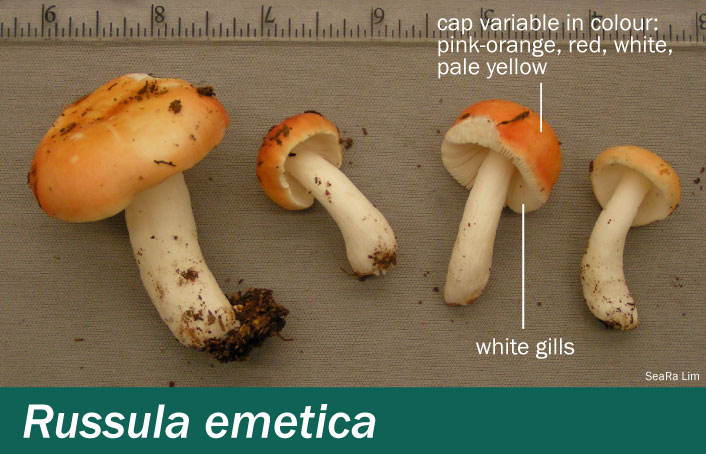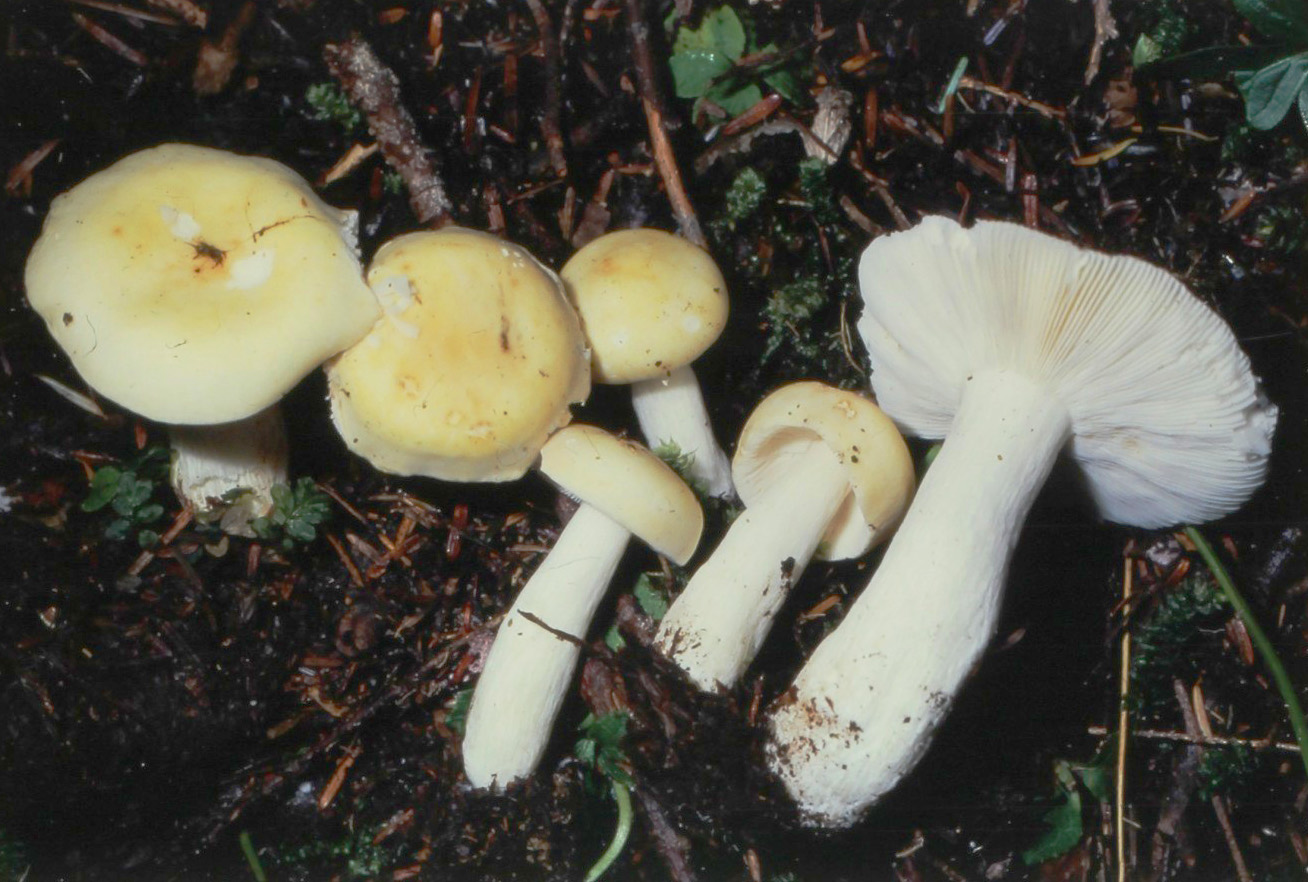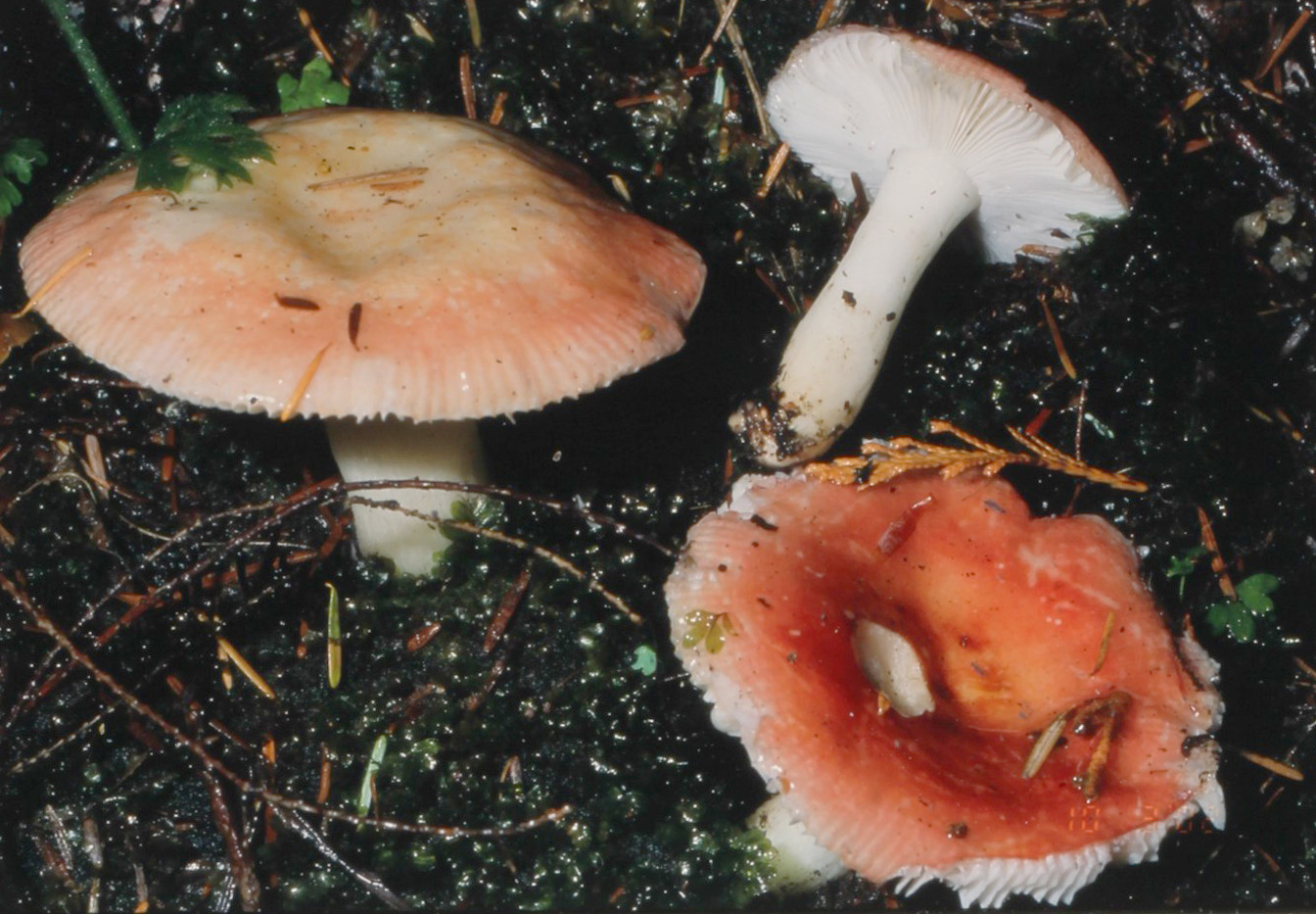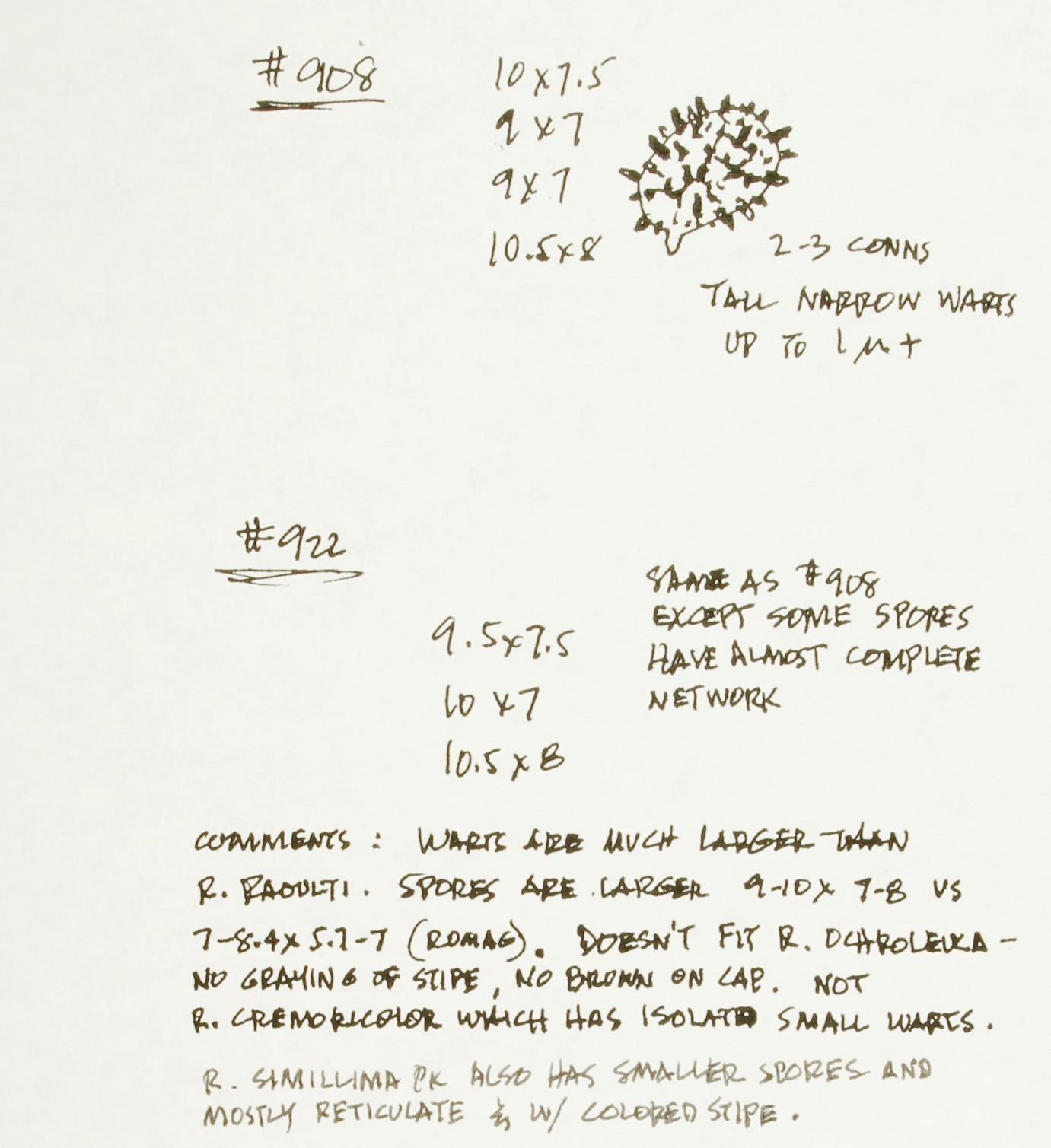Russula emetica — Sickener or emetic russula
Fragile mushrooms, breaking easily into bits and pieces, with white gills and a fiery hot taste.
Odour: None, to generic mushroom-like.
Taste: Gills and flesh very hot/spicy. To test, chew on a pea-sized piece and then spit it out.
Cap: 4–10 cm in diameter, starting out convex. With age the cap flattens out, and has a depression in the centre. The margin is grooved up to 1 cm from the edge. The colour varies from red to pink with yellow blots and a red spot in the centre, to cream-coloured or white. The surface is viscid when wet. One can peel the cap cuticle off from the cap margin more or less halfway to the centre.
Gills: Adnate, white, crowded, with few if any shorter gills between the long ones.
Stem: 4–10 cm long x 0.5–1 cm wide, equally wide over the whole length or slightly widening towards the base. White, not discolouring when scratched. Sometimes brown at base with age. Stuffed, not hollow.
Ring or veil: None.
Cup: None.
Spores: 8–11 x 7–9 µm, with spines or warts ~1 µm tall that are connected by a low network of ridges.
Habitat: On the ground or on well-rotted wood in various types of coniferous forests, common; ectomycorrhizal. DNA barcoding studies indicated that R. emetica of the Pacific northwest were infrequent in bogs7. This conflicted with earlier interpretations of the species habitat8.
Geographic distribution: North America, forests of BC and the Pacific northwest into Alaska; Europe; possibly circumboreal.
In the Pacific northwest, the sickener is perhaps the most common among a group of five closely related, similar Russula species. The odds are good that a Russula from BC or the Pacific northwest with a red, yellow or white cap, with white spores and with a fiery hot taste7 will be the sickener, although DNA sequence analysis would be needed to confirm the identification. None of these five species in the group are safe to eat and although parboiling and pickling may render them edible, at some point one has to ask "why bother?"
Symptoms: vomiting, nausea, diarrhoea, and colicky stomach cramps, starting half an hour to three hours after consumption8. Patients have recovered as soon as the mushrooms have left the body.
Treatment: Contact your regional Poison Control Centre if you or someone you know is ill after eating wild mushrooms. Poison Centres provide free, expert medical advice 24 hours a day, seven days a week. If possible, save the mushrooms or some of the leftover food containing the mushrooms to help confirm identification.
Poison Control:
British Columbia: 604-682-5050 or 1-800-567-8911.
United States (WA, OR, ID): 1-800-222-1222.




